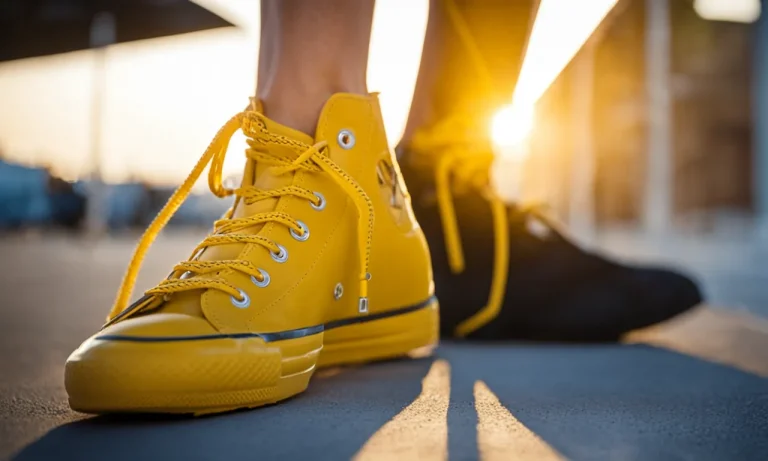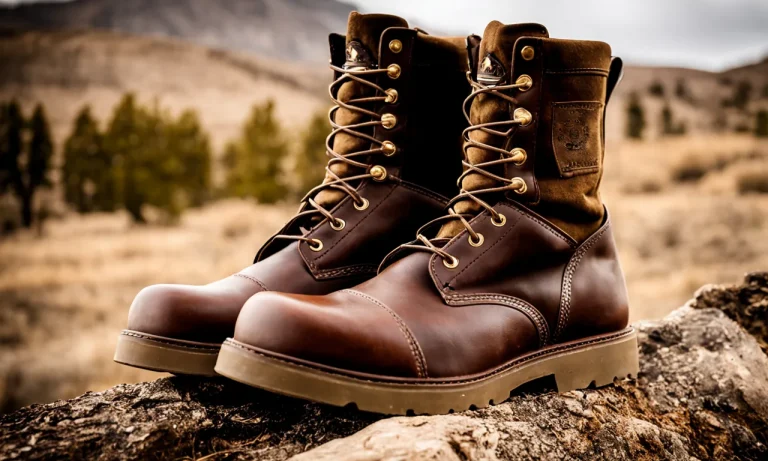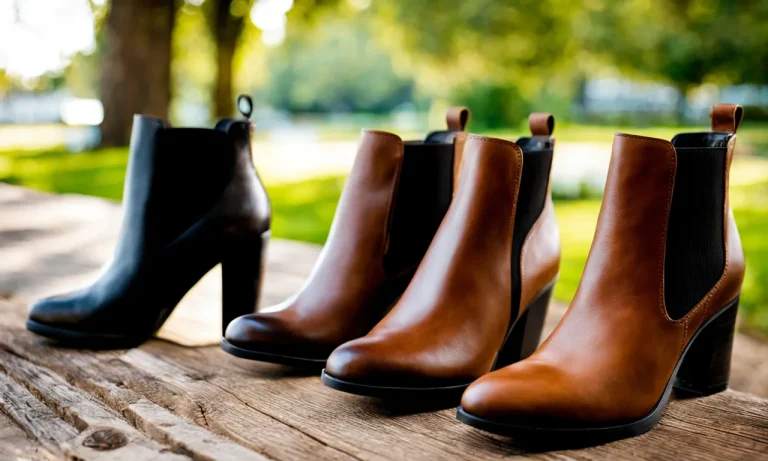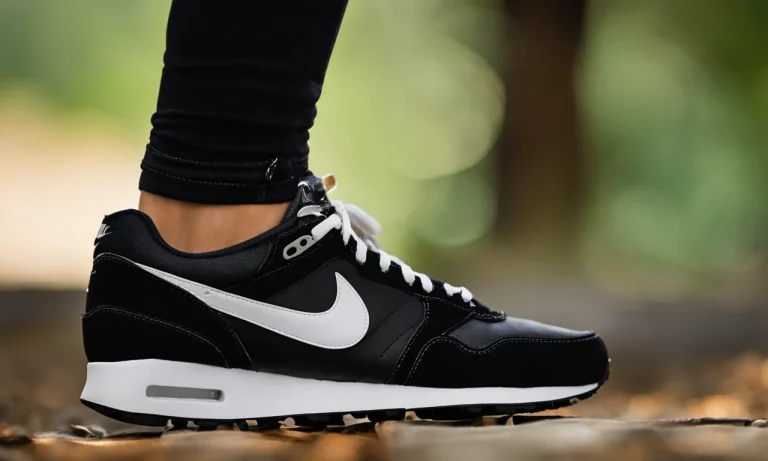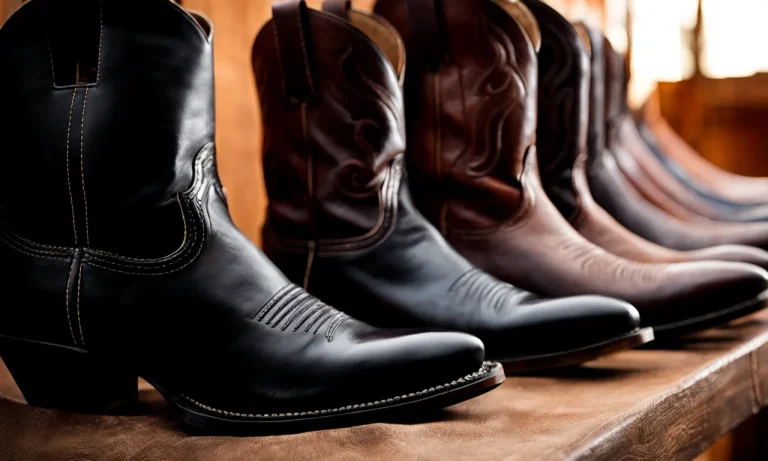Having shoes that fit just right is important for comfort and avoiding foot problems. So what happens when you lose a significant amount of weight? Does your shoe size change along with your clothing size? Keep reading to find out.
If you’re short on time, here’s a quick answer to your question: Losing weight can lead to slight changes in shoe size, but major weight loss of around 100 pounds or more is usually needed to go down a full shoe size.
The amount your feet shrink with weight loss depends on factors like how much weight you lose and if you had any foot swelling prior to losing weight.
Weight Loss Can Lead to Minor Shoe Size Changes
Many people wonder if their shoe size will change when they lose weight. The answer is, it can. Weight loss can have an impact on various parts of the body, including the feet. While the changes may not be drastic, it is important to understand how weight loss can affect your shoe size.
Losing a small amount of weight is unlikely to change your shoe size
If you are planning to shed a few pounds, you don’t need to worry about buying a new shoe wardrobe. Losing a small amount of weight, such as 5-10 pounds, is unlikely to cause a noticeable change in shoe size.
The size of your feet is determined by various factors, including genetics and bone structure, which don’t change significantly with minor weight loss.
Significant weight loss may lead to going down half a shoe size
On the other hand, if you undergo a significant weight loss journey, you may experience a minor reduction in shoe size. This is because excess weight can put extra pressure on your feet, causing them to spread and flatten.
As you lose weight, the pressure on your feet decreases, which can lead to a slight decrease in shoe size.
According to a study published in the Journal of Foot and Ankle Research, individuals who lost an average of 20 pounds saw a reduction of half a shoe size on average. However, it’s important to note that this is just an average, and individual results may vary.
Some people may experience a more significant change, while others may not see any difference at all.
Older people may experience greater foot size reduction
As we age, our feet may naturally change in size and shape due to factors such as muscle weakening and loss of elasticity in the ligaments. This means that older individuals who lose weight may experience a greater reduction in shoe size compared to younger individuals.
So, if you are an older adult embarking on a weight loss journey, you might notice a more noticeable change in your shoe size.
It’s important to remember that shoe size changes due to weight loss are generally minor and may not require a complete overhaul of your shoe collection. However, if you notice discomfort or your shoes feeling too loose after losing a significant amount of weight, it might be a good idea to visit a professional shoe fitter to ensure you are wearing the correct size.
For more information on how weight loss affects shoe size, you can visit www.foothealthfacts.org, a website dedicated to foot health and education.
How Much Weight Loss Impacts Shoe Size
Many people wonder if losing weight can affect their shoe size. The truth is, weight loss can indeed have an impact on the size of your feet. Let’s take a closer look at how different amounts of weight loss can affect your shoe size.
Over 100 pounds of weight loss often leads to a full shoe size reduction
If you have lost a significant amount of weight, such as over 100 pounds, it is not uncommon for your shoe size to change. The excess weight that you carried before could have put pressure on your feet, causing them to spread and flatten.
As you lose weight, this pressure is relieved, and your feet may become narrower and more compact. In some cases, individuals have reported a full shoe size reduction after losing over 100 pounds.
Losing 50-100 pounds can cause feet to shrink by half a size
Even if you haven’t lost over 100 pounds, losing a substantial amount of weight, such as 50-100 pounds, can still lead to a noticeable reduction in shoe size. The reduction is typically around half a size, as the pressure on your feet decreases and they regain their natural shape.
It’s important to note that the extent of the size reduction can vary from person to person, depending on factors such as genetics and foot structure.
Minor weight loss of 10-30 pounds does not typically affect shoe size
If your weight loss journey involves losing a relatively small amount of weight, such as 10-30 pounds, it is unlikely to have a significant impact on your shoe size. While your feet may feel more comfortable in your shoes due to reduced pressure, the actual size of your feet is unlikely to change noticeably.
However, it’s worth noting that everyone’s body is unique, and some individuals may experience slight changes in shoe size even with minor weight loss.
Factors That Influence Shoe Size Changes
When embarking on a weight loss journey, many individuals wonder if their shoe size will change along with their body. While weight loss can indeed have an impact on shoe size, there are several factors that influence this change. Let’s explore some of the key factors:
Amount of swelling prior to weight loss
Before considering weight loss as a factor in changing shoe size, it’s important to take into account any pre-existing swelling in the feet. Some individuals may experience swelling due to various reasons such as pregnancy, injury, or certain medical conditions.
As weight is lost and the swelling reduces, it is possible for the shoe size to change. However, it’s worth noting that not everyone experiences significant swelling, so the impact on shoe size may vary from person to person.
Presence of foot conditions like plantar fasciitis
Foot conditions like plantar fasciitis can also influence changes in shoe size. Plantar fasciitis is a common condition characterized by inflammation of the tissue that connects the heel bone to the toes, causing heel pain.
This inflammation can lead to swelling and discomfort, potentially resulting in a change in shoe size. As weight is lost and the inflammation subsides, the feet may return to their original size.
The individual’s age and health status
Age and overall health can play a role in how weight loss affects shoe size. As we age, our feet tend to flatten and lose some of their natural padding, which can cause a decrease in shoe size. Additionally, individuals with certain health conditions, such as diabetes, may experience changes in foot structure and size due to the impact of the condition on the feet.
Therefore, weight loss may have a different effect on shoe size depending on these factors.
Genetics and natural foot structure
Genetics and natural foot structure also contribute to variations in shoe size changes during weight loss. Some individuals naturally have wider or narrower feet, higher or lower arches, or different toe lengths.
These factors, which are largely determined by genetics, can impact how weight loss affects shoe size. While weight loss may lead to a decrease in shoe size for some, others may not see a significant change due to their natural foot structure.
It’s important to remember that shoe size changes can vary from person to person and may not be solely attributed to weight loss. Consulting with a healthcare professional or a podiatrist can provide personalized guidance based on your specific circumstances.
Tips for Managing Shoe Size Changes
Shop for shoes later in the day when feet are most swollen
When it comes to managing shoe size changes, timing is key. Our feet tend to swell throughout the day due to various factors such as heat, humidity, and physical activity. Therefore, it is recommended to shop for shoes later in the day when your feet are at their most swollen.
This ensures that you choose the right size that accommodates any changes in foot size that may occur as a result of weight loss.
Use removable insoles to take up extra space
If you have lost weight and find that your shoes feel a bit loose or have extra space, using removable insoles can be a simple and effective solution. These insoles can help fill up the extra space and provide a snugger fit. Additionally, they offer added comfort and support for your feet.
You can find a variety of removable insoles in stores or online, catering to different foot shapes and shoe sizes.
Consider a shoe stretching spray to tighten loose shoes
If you have a pair of shoes that have become loose due to weight loss, a shoe stretching spray can be a handy tool. These sprays are designed to soften the material of the shoe, making it easier to stretch and mold to the shape of your foot.
Simply spray the inside of the shoe, put them on, and walk around to allow the spray to work its magic. Remember to follow the instructions provided with the spray to avoid any damage to your shoes.
Get professionally fitted for new shoes after major weight loss
If you have experienced a significant weight loss, it is advisable to consult a professional shoe fitter to ensure you are wearing the correct shoe size. They have the expertise to measure your feet accurately and suggest the appropriate shoe size and style for your new weight.
Investing in a proper fitting can prevent discomfort, foot problems, and the need for frequent shoe replacements. Many reputable shoe stores offer professional fitting services, so don’t hesitate to seek their assistance.
Conclusion
In summary, losing a substantial amount of weight can lead to minor shoe size reductions, but major weight loss is usually needed to go down a whole shoe size. Pay attention to how your shoes fit after losing weight, and don’t hesitate to get refitted if your old shoes become too loose.
Focusing on finding properly fitting footwear will help support your feet and make it comfortable to maintain your healthy new lifestyle.

